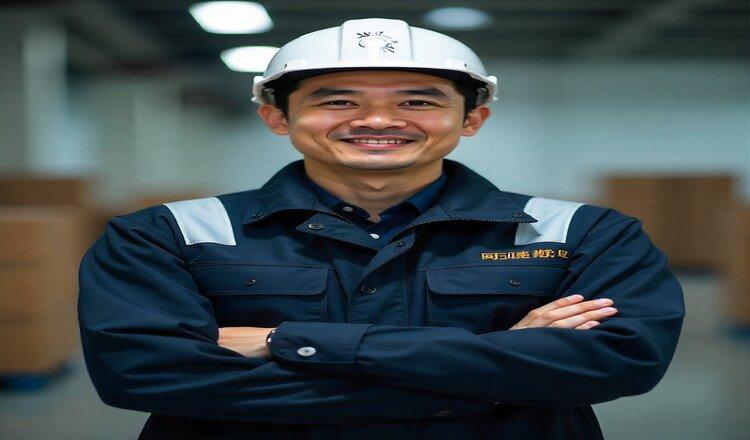Ensuring workplace safety is a responsibility shared by everyone, and understanding machinery hazards is a critical part of this. Machinery-related incidents are among the leading causes of workplace injuries, making proper awareness and preventive measures essential. In this article, we’ll explore the common hazards associated with machinery, how to prevent them, and the role of NEBOSH Safety Courses in equipping workers with the right knowledge.
Understanding Machinery Hazards
Machinery hazards are risks that arise from using machines in workplaces such as factories, construction sites, and workshops. They can range from minor injuries like cuts and bruises to severe incidents involving amputations or fatalities. Common types include:
-
Mechanical hazards: Moving parts like belts, gears, and blades.
-
Electrical hazards: Machines connected to faulty wiring or improper grounding.
-
Ergonomic hazards: Poorly designed controls or working positions causing strain.
-
Noise hazards: High decibel levels from machinery leading to hearing loss.
-
Thermal hazards: Hot surfaces or steam emissions.
Recognizing these hazards is the first step toward creating a safer work environment.
Top Machinery Hazards in the Workplace
1. Moving Parts and Pinch Points
Machines with rotating shafts, belts, and gears can trap clothing, hair, or body parts, causing severe injuries.
Prevention Tips:
-
Install guards and barriers around moving parts.
-
Train workers to avoid wearing loose clothing or jewelry near machines.
-
Use emergency stop buttons in accessible locations.
2. Electrical Hazards
Faulty wiring, improper grounding, and exposed electrical components increase the risk of shocks or electrocution.
Prevention Tips:
-
Conduct regular inspections of electrical systems.
-
Ensure machines are connected to proper grounding.
-
Provide insulated tools and PPE like gloves.
3. Entanglement and Material Ejection
Loose clothing, long hair, or unsecured objects can get caught in machinery, or machines may eject materials at high speed.
Prevention Tips:
-
Maintain safe distances from operating machinery.
-
Use protective shields or screens.
-
Ensure proper fastening of materials before operation.
4. Noise Hazards
Loud machines can cause hearing damage and increase stress levels.
Prevention Tips:
-
Provide ear protection like earmuffs or earplugs.
-
Schedule regular hearing tests for employees.
-
Implement noise-reducing measures like enclosures or dampers.
5. Ergonomic Hazards
Poor posture, repetitive motions, or awkward machine controls can lead to musculoskeletal disorders.
Prevention Tips:
-
Design workstations that support natural posture.
-
Rotate tasks to reduce repetitive strain.
-
Train workers on correct lifting and operational techniques.
6. Thermal and Fire Hazards
Machines with hot surfaces or combustible components pose burn and fire risks.
Prevention Tips:
-
Mark hot surfaces clearly.
-
Use thermal insulation and proper ventilation.
-
Keep fire extinguishers and emergency procedures accessible.
7. Slips, Trips, and Falls Around Machinery
Spilled oils, loose cables, or cluttered workspaces can lead to accidents near machines.
Prevention Tips:
-
Keep areas around machinery clean and dry.
-
Use anti-slip mats and proper lighting.
-
Train employees on housekeeping and hazard awareness.
The Role of NEBOSH Safety Courses
A NEBOSH Safety Course provides workers and supervisors with comprehensive training to identify, assess, and control workplace hazards, including machinery risks. Key benefits include:
-
Understanding hazard identification and risk assessment techniques.
-
Learning practical safety control measures.
-
Gaining knowledge about compliance with national and international safety standards.
-
Enhancing workplace culture and accountability for safety.
By integrating NEBOSH principles, companies can reduce machinery-related accidents and improve overall operational efficiency.
Step-by-Step Machinery Safety Checklist
-
Conduct a detailed risk assessment for each machine.
-
Install protective guards and emergency stops.
-
Train workers on safe operating procedures.
-
Maintain machinery regularly and document inspections.
-
Provide appropriate PPE for all employees.
-
Keep the workspace organized and hazard-free.
-
Encourage reporting of unsafe conditions immediately.
Real-Life Example
At a medium-sized manufacturing plant, a worker suffered a hand injury from an unguarded conveyor belt. After implementing a NEBOSH-recommended risk assessment, the company installed proper guards, trained staff, and reduced similar incidents to zero within a year.
FAQs About Machinery Hazards
Q1: What is the most common machinery hazard?
Mechanical injuries from moving parts and pinch points are the most frequent.
Q2: Can training really prevent machinery accidents?
Yes, proper training, like NEBOSH Safety Courses, equips employees to recognize hazards and follow safe procedures.
Q3: How often should machinery be inspected?
At minimum, machines should be inspected monthly, with critical components checked daily.
Q4: Are PPEs enough to ensure safety?
PPEs are essential but must be combined with engineering controls, training, and proper housekeeping.
Conclusion
Machinery hazards are a significant workplace risk, but with the right preventive measures and training, accidents can be minimized. Implementing safeguards, maintaining equipment, and fostering a safety-conscious culture are crucial steps. Enrolling in a NEBOSH Safety Course equips both employers and employees with the knowledge and tools to manage these hazards effectively, ensuring a safer, more productive work environment.
Safety is not just a requirement; it’s a responsibility. Equip yourself, train your team, and make machinery safety a priority.

